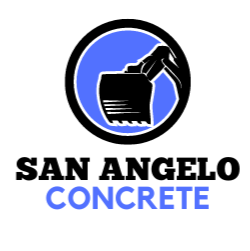Residential concrete lifting
When the weight of concrete begins to crush you, it’s time to get your house a lift. Residential lifting is an often overlooked but vitally important part of ensuring your home remains standing for many years to come. Not only does lifting your home help prevent unnecessary settlement due to soil expansion and contraction, but it also prevents water from seepage into the foundation and basement walls. It also helps maintain the integrity of the building materials by reducing its load. Residential lifting entails using a variety of machinery and techniques that enable you to safely carry heavy loads with ease. The process can be as simple as hoisting items from one spot to another or as complex as assembling a crane and hoist system that lifts everything from an exterior wall to a second-story deck.
What is Concrete Lifting?
Concrete is a composite substance consisting of cement and aggregates such as sand, gravel, and broken particles of coal. The mixture is poured into a form and left to cure, harden, and expand. After this process, the concrete is solid and durable. Once set, concrete does not lose much of its strength when stressed. In many ways, this composite material is like a 3-D book. If you lift one page, the rest of the book stays put. This property is what makes concrete the ideal building material for the foundation. The foundation is the base upon which your home rests. It provides a stable platform for the rest of the home to be built upon. If the soil beneath your home shifts or swells, the foundation can sink. If the soil shifts or shrinks, it can cause settlement in the basement walls and foundation. Both of these issues can lead to costly damage to your home and the people inside it.
Equipment used for lifting concrete
Concrete lifting machinery is one of the most important pieces of equipment used for lifting concrete. It’s the piece of machinery that gets the concrete to the site, and it’s the one that you need to get right. There are a number of different types of concrete lifting machinery in which you can choose from. Each has its own advantages and disadvantages, which you’ll need to take into account when choosing the right type of equipment for your specific job. - Stacker bucket trucks. These bucket trucks have buckets that stack on top of each other. This means that you can stack multiple buckets together and carry heavier loads. They are usually powered by diesel engines, which are more efficient than gasoline engines. - Horizontal bucket trucks. This type of bucket truck utilizes horizontal buckets that can carry heavier loads because they aren’t as dependent on the bucket’s capacity as vertical bucket trucks are. These horizontal bucket trucks have a more ergonomic design and offer more flexibility for positioning. They are usually powered by diesel engines. - Jackshaft trucks. This type of truck utilizes a jackshaft that helps you lift larger, heavier loads. It is powered by hydraulic or electric motors. - Scissor bucket trucks. These bucket trucks use scissor bucket arms to lift the load. They are powered by diesel engines that provide low emissions and low fuel consumption. - Boom trucks. This truck type utilizes overhead booms to lift and position the concrete. They are powered by diesel engines that provide low emissions and low fuel consumption.
Safety Tips for Residential Concrete Lifting
When you lift concrete, you are working near extremely hot and heavy materials that can cause serious injury if mishandled. Therefore, it’s essential that you follow all safety precautions during concrete lifting. As a general rule, the more experienced and experienced the crew, the higher the safety level. In order to minimize safety hazards, you should follow these safety tips: - Ensure that all pre-lift safety precautions are followed, including obtaining valid permits and contracting with a professional professional contractor. - Follow the concrete lifting procedures in your manual. - Train your workers on what to do in the event of an emergency. - Maintain a safe work environment for your workers.
Steps involved in residential concrete lifting
When you decide to undertake residential concrete lifting, you will need to consider a number of factors related to the project. The scope of the lifting, the location of the lifting, the type of concrete being lifted, and the condition of the concrete are just a few of the factors that you’ll need to take into account. Once you’ve decided on the scope of the project, you can begin the planning process. This includes determining the equipment required, the timing of the project, and the type of traffic that will be affected as a result of the work. To ensure the most efficient use of time and resources, you should also plan for potential delays and interruptions that may occur during the process. For example, you should factor in unforeseen equipment breakdowns, inclement weather, and other factors that may delay the project.
Conclusion
Lifting concrete is a crucial part of maintaining the structural integrity of your home. Given the nature of concrete, it’s important to protect your foundation from soil settlement and water damage. This can be done by installing a concrete lift. When lifting concrete, you’ll need to choose the right type of machinery and follow all of the safety guidelines laid out by the National Concrete Lifting Institute (NCLI). Doing this well can help you protect your family and your home for many years to come.
